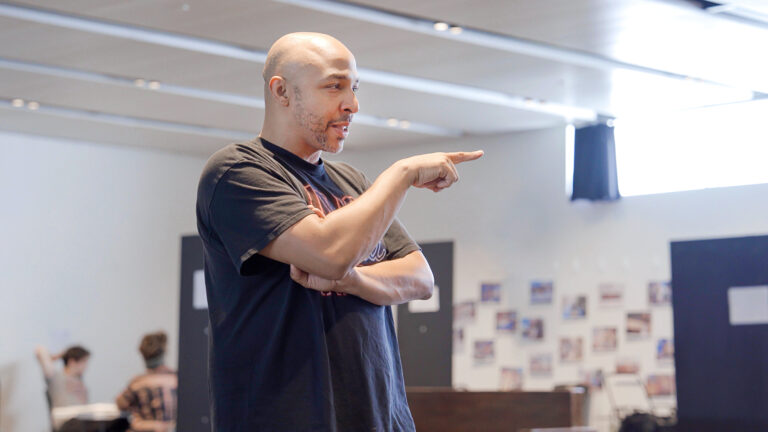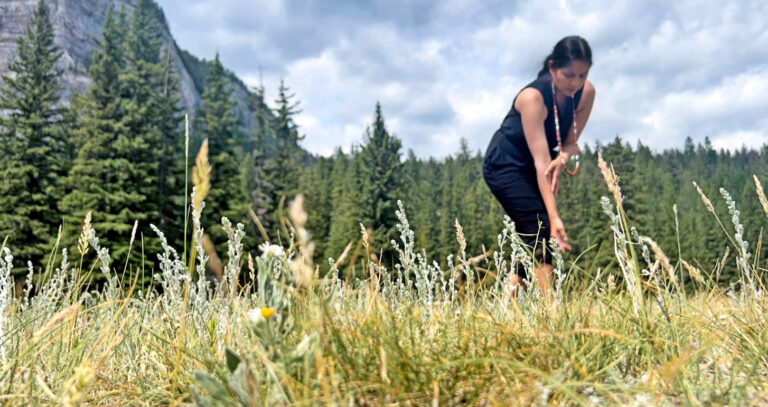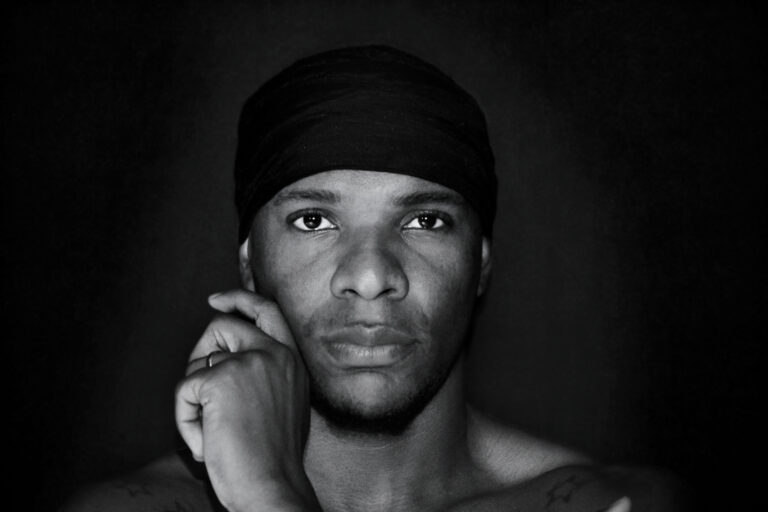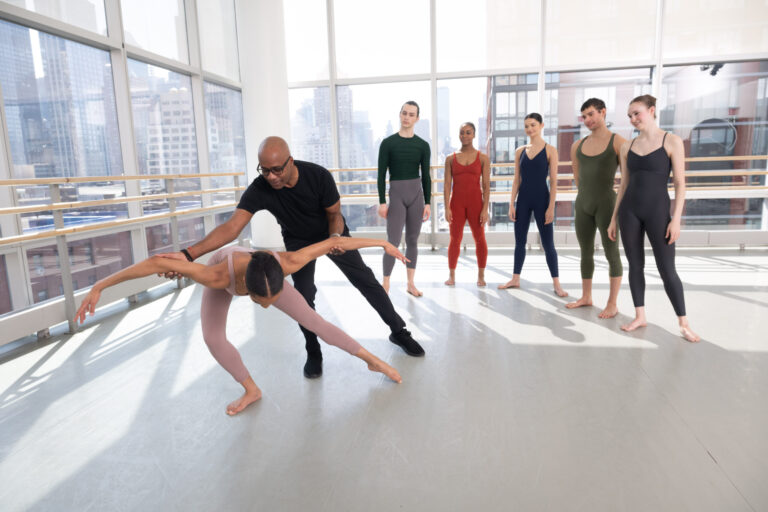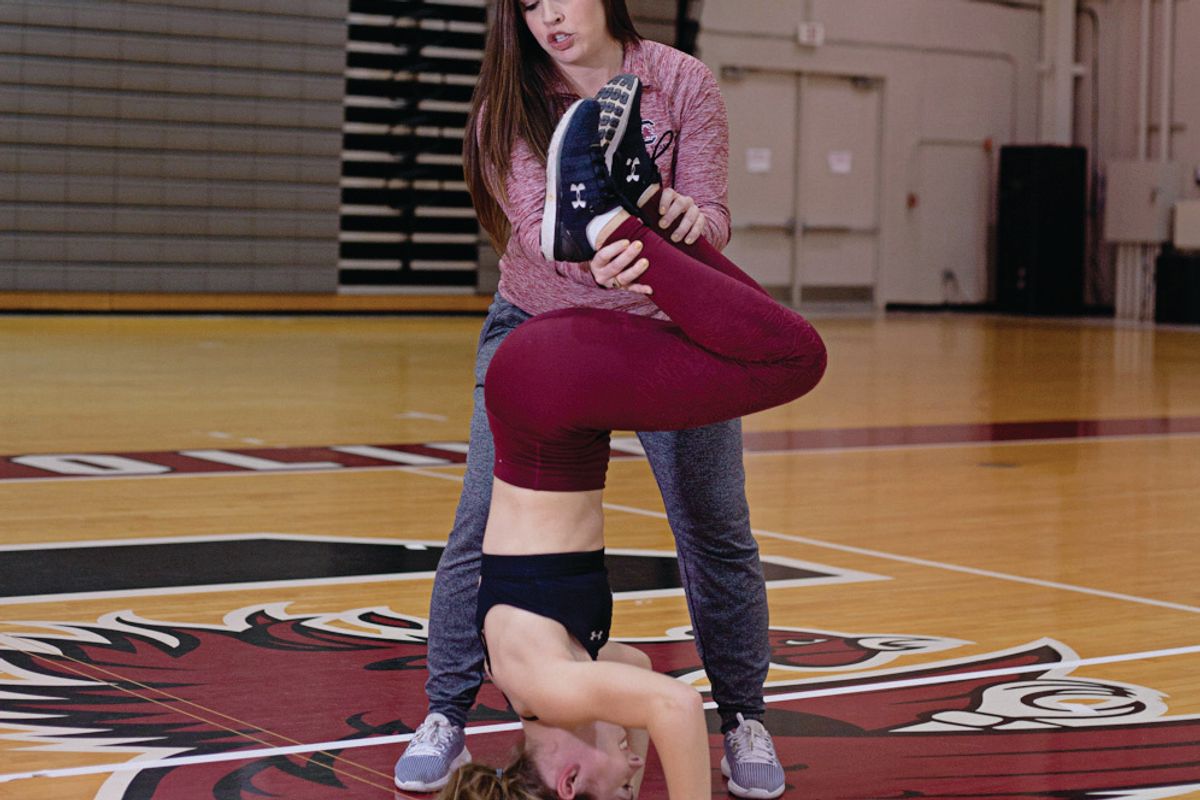
It’s nearing 5 pm on a Sunday in February, and Queen’s “Bohemian Rhapsody” reverberates through University of South Carolina’s volleyball gym, where the Carolina Girls dance team is rehearsing a Nationals routine. What’s most striking isn’t the dancers’ radiating energy or the team’s precise unanimity. Instead, it’s the complexity of the choreography—the weaving formations, transitions, level changes, directional shifts and moments of partnering—that seems out of place on center court. It’s a scene that would make more sense in front of a mirror (not bleachers) and on marley (not wood). Yet the 28 collegiate dancers, clad in well-worn jazz shoes and official Under Armour team apparel, look right at home, happily working out the kinks in each phrase and troubleshooting lifts.
At the helm of the group is Lindsay Sprague, who has been head coach since 2007, the team’s inaugural season. In that time, she has grown the program, working within the school’s athletic department to increase performance opportunities for the dancers and boost the team’s visibility. At first the team only performed during men’s basketball games; three seasons later they made their first appearance during a football game—in front of a crowd of 80,000 fans. And this fall, the group left their usual spot on the sidelines to perform on the field, something she hopes continues in future years.
While the University of South Carolina has a renowned academic dance major with a classical focus, students who seek a place on Sprague’s team aren’t looking for conservatory-style training. (Sprague herself holds a degree in accounting.) Still, several Carolina Girls from past seasons have gone on to dance professionally for the Carolina Panthers TopCats, Atlanta Falcons and the Knicks City Dancers, and the Carolina Girls have placed in the top five in their division (1A) at National Dance Alliance’s Collegiate Championship Nationals since 2010. (At press time, the 2019 Nationals had yet to take place.)
Like most collegiate dance teams, Sprague’s falls under the school’s spirit program—along with cheerleaders and mascots. Yet the majority of students who Sprague auditions and selects for the Carolina Girls come from the dance-studio world. Though they are proficient in jazz, contemporary and hip hop, they’re often new to pom and tumbling.
“About a third of our team this year trained at The Southern Strutt,” Sprague says, citing the popular dance studio in nearby Irmo. And while she relishes the dancers’ technical strengths, there are some tricky transitions for a studio dancer. “The precision aspect of a dance team is probably the biggest shock to a studio dancer,” she says. “As performers, we’re praised for artistic expression, and having one’s own independent style. At conventions, you want to stand out in the class. But that’s not the case on a dance team. You want dancers who’ll mold and gel with the team style. Every pinky finger placement has to be exactly the same—uniformity is very strict.”
Likewise, tumbling tricks that are evaluated during auditions (like kip-ups, side aerials and headsprings) are sometimes foreign skills, and Sprague spends time breaking them down during pre-audition clinics. “We teach them progressively,” she says. “So they’ll first learn how to get comfortable in a headstand, or getting in and out of backbends to get used to the movements and being upside-down. And we do everything on mats with current teammates spotting the new dancers, which tends to make everyone more comfortable.”
DT June 2019 Technique Video
www.youtube.com

